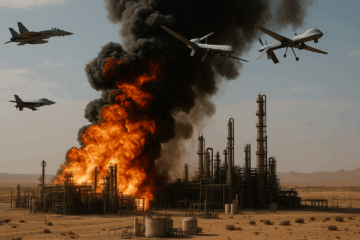Plutonium-239 has an important relationship with uranium-235 when it comes to nuclear weapons. Let me explain.
With the symbol Pu on the Periodic Table, plutonium is an element with an atomic number of 94, which means its nucleus has 94 protons. As a heavy metal it has many more neutrons than protons, but more on that later.
Plutonium is categorized as a heavy metal that is unstable, which means it is radioactive. More importantly, it is fissionable, meaning it splits apart easily when neutrons collide with a plutonium atom. This collision releases energy.
Interestingly uranium gives life to plutonium in the sense that plutonium is produced through beta decay from uranium. Once plutonium is produced, uranium is needed to help plutonium live up to its full potential.
Plutonium-239 is a key material for nuclear weapons, particularly in an implosion-type nuclear weapon, primarily found in modern arsenals. These weapons use conventional explosives to compress a plutonium core to a supercritical state, initiating a chain reaction.
In a nuclear weapon, the plutonium pit is compressed by conventional explosives, which is timed to create a symmetrical implosion, applying the same inward pressure on the entire pit. Thus, the pit reaches a supercritical state. This means that the plutonium nuclei are packed densely enough for neutrons released by fission to cause further fissions at an accelerating rate—cause a stable chain reaction.
To start a chain reaction, an external neutron source, often a device called a neutron initiator, is used. This ensures enough neutrons are present at the moment the pit becomes supercritical.
In a thermonuclear weapon, the energy released from the fission reaction in the plutonium pit compresses and heats a secondary fusion stage. This secondary stage usually contains isotopes like deuterium (discovered by American chemist Harold C. Urey for which he was awarded the Nobel Prize for Chemistry in 1934) and tritium (discovered in 1934 by the physicists Ernest Rutherford, M. L. Oliphant, and Paul Harteck), which undergo fusion reactions under the extreme conditions generated by the primary fission explosion.
Precise engineering ensures that both uranium and plutonium interact seamlessly, achieving the desired explosive yield. While uranium and plutonium are both “heavy metals,” a “classical” metaphor will prove useful to explain how uranium and plutonium work together with uranium as the conductor of an orchestra and plutonium as the star soloist.
Uranium, particularly uranium-235, sets the stage for the entire nuclear reaction. Just as a maestro leads the orchestra and ensures that all elements come together harmoniously, uranium initiates the nuclear chain reaction in the secondary stage of a thermonuclear weapon where it leads to a more significant fusion reaction. The virtuoso plutonium-239, with its higher likelihood of fission upon neutron impact, takes on the pivotal role of driving the core fission reaction in modern nuclear weapons. Plutonium’s implosion mechanism requires precision for its masterful execution.
Plutonium’s implosion reaction is the centerpiece, releasing immense energy and driving the explosive power of the bomb. Its ability to sustain a rapid chain reaction is crucial, similar to how a virtuoso’s skill ensures the success of a performance. Both elements must work in harmony.
To continue with the metaphor of an orchestra, just as some orchestras perform in the orchestra pit, uranium and plutonium work together via a pit. To optimize yield and efficiency of uranium-235 and plutonium-239, a plutonium pit is surrounded by a uranium tamper in a thermonuclear weapon. This arrangement leverages the high-speed neutrons produced by fusion to induce additional fission in the uranium-235, thereby boosting the explosion’s overall yield.
The plutonium pit is typically composed of a sphere or shell of plutonium-239, a fissile isotope capable of sustaining a nuclear chain reaction. The pit often contains a small amount of gallium to stabilize its crystal structure, preventing the plutonium from becoming brittle.
On October 1, 2024, the US Department of Energy’s National Nuclear Security Administration (NNSA) verified completion of the first production unit (FPU) of a plutonium pit for the W87-1 modification program. A plutonium pit is a necessary component in America’s nuclear warheads. The NNSA is currently rebuilding the capability to manufacture plutonium pits, at the rate of no fewer than 80 pits per year.
In the end, what is important to keep in mind is that plutonium and uranium work together in the nation’s nuclear weapons. Through great science and even better designs, plutonium and uranium work together to ensure a safe, secure, and effective nuclear arsenal.
Alex Littlefield is Chief of Staff at the National Institute for Deterrence Studies (NIDS). The views expressed are his own.
About the Author

Alexis Littlefield
Alex serves as a Fellow at the National Institute for Deterrence Studies. Alex currently lives in Washington DC with his wife. Previously he lived in Ningbo, China where he taught at the University of Nottingham School of International Studies. He lived in Taichung, Taiwan where he was an Associate Professor at Feng Chia University’s College of Business. Prior to that he earned his PhD at the Graduate Institute of International Politics, National Chung Hsing University. He enjoys Chinese tea and performing the tea ceremony.




